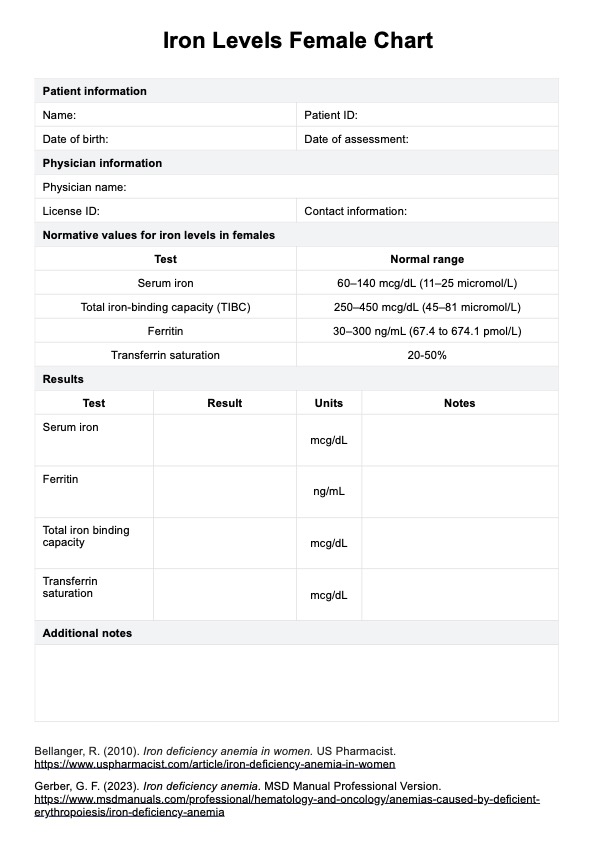A good iron level for a woman typically ranges from 60 to 140 mcg/dL. These levels indicate sufficient iron stores for maintaining overall health and supporting the production of healthy red blood cells.

Assess iron levels in female patients, track symptoms, and make guided tailored treatment plans with the Iron Levels female Chart. Download now!
A good iron level for a woman typically ranges from 60 to 140 mcg/dL. These levels indicate sufficient iron stores for maintaining overall health and supporting the production of healthy red blood cells.
Iron below 60 mcg/dL can be concerning, as it may indicate iron deficiency or an increased risk of developing iron deficiency anemia. Monitoring these levels closely and considering further evaluation or treatment is essential.
Yes, an iron level of 12 mcg/dL is considered low and may signal the presence of iron deficiency. This low level could result in symptoms like fatigue and weakness, necessitating further assessment and potential treatment.
EHR and practice management software
*No credit card required
Free
$0/usd
Unlimited clients
Telehealth
1GB of storage
Client portal text
Automated billing and online payments